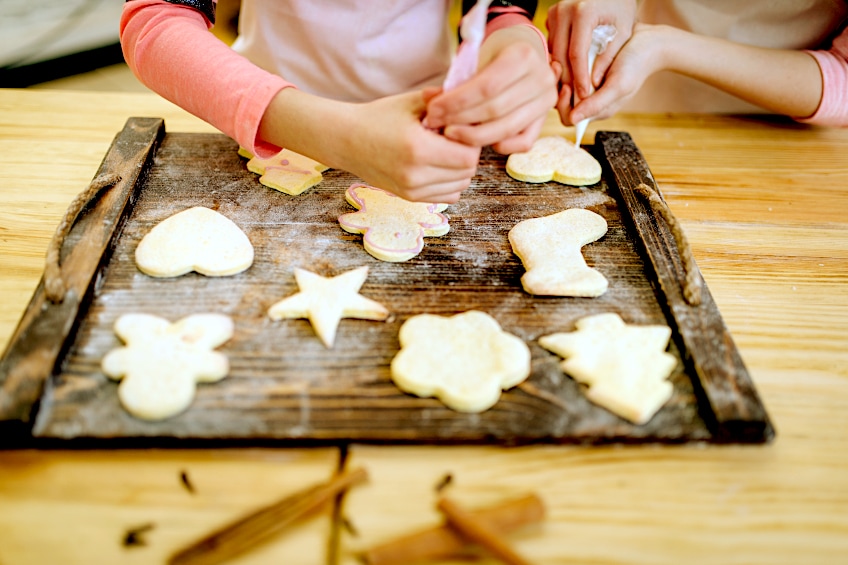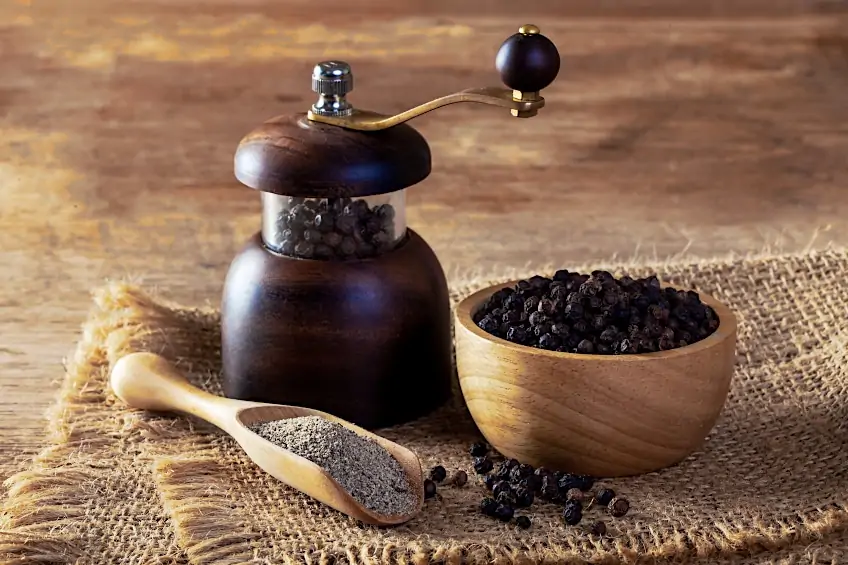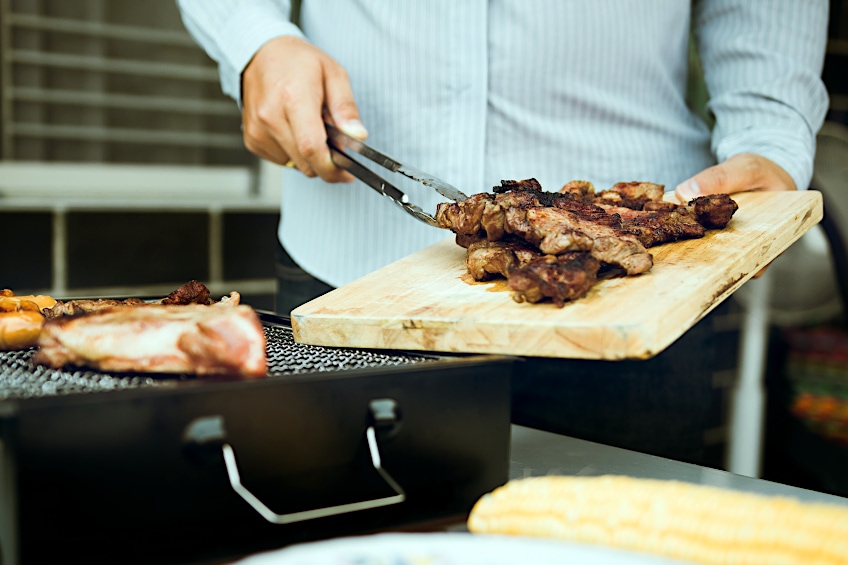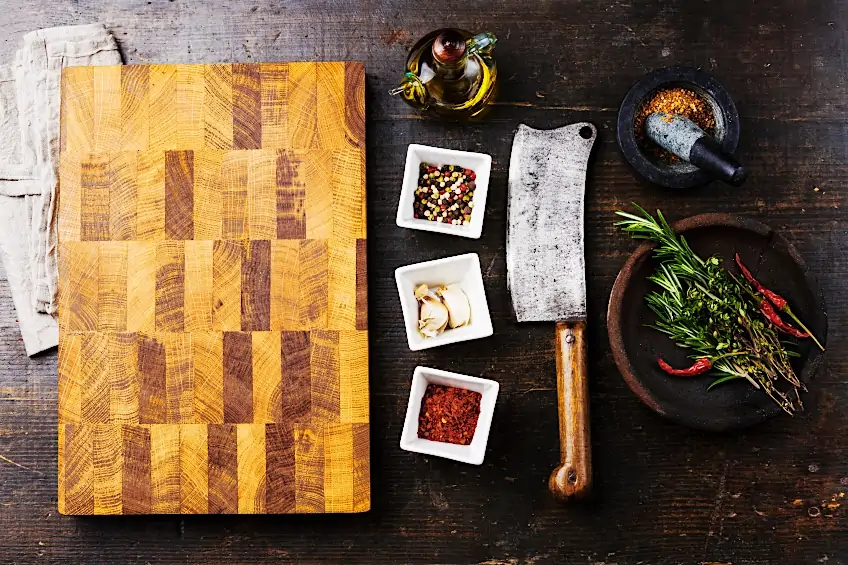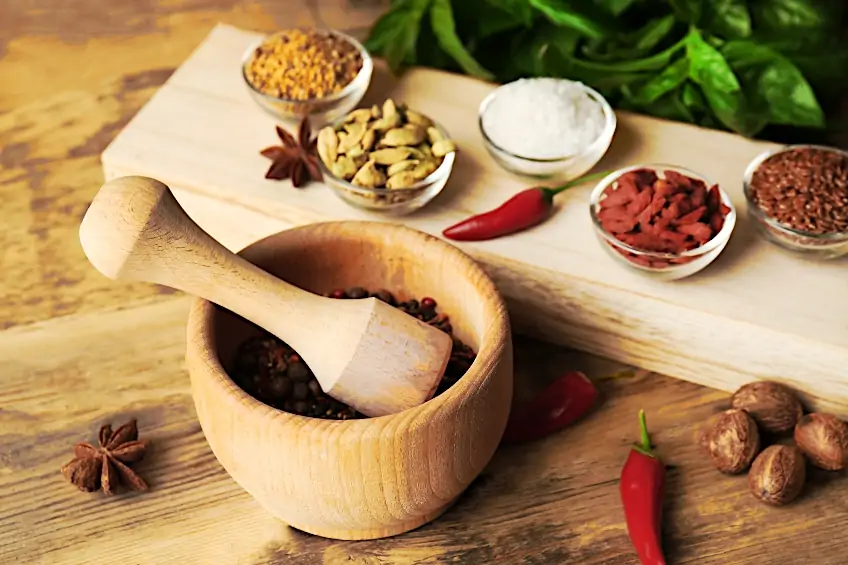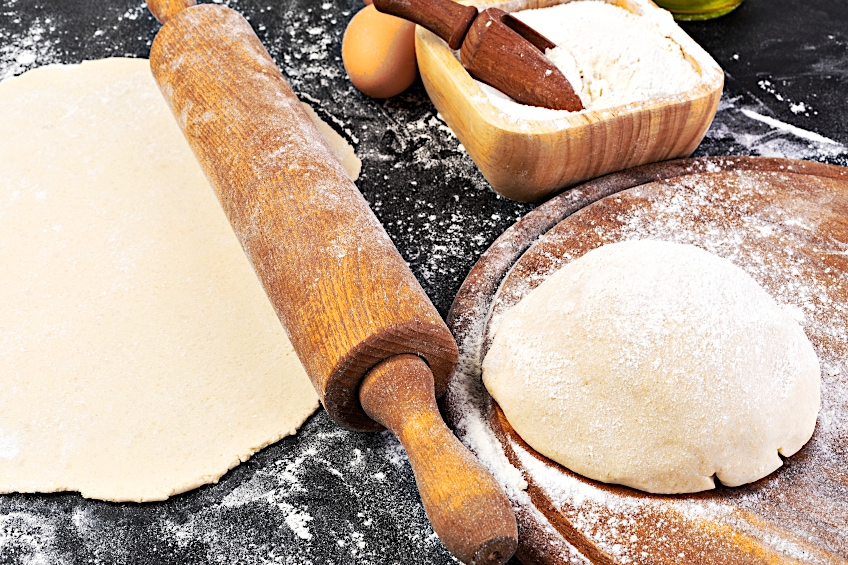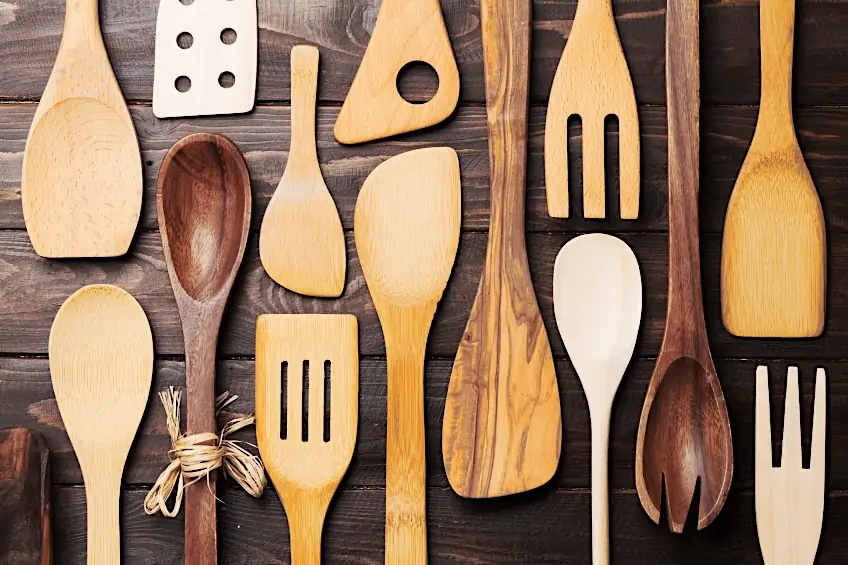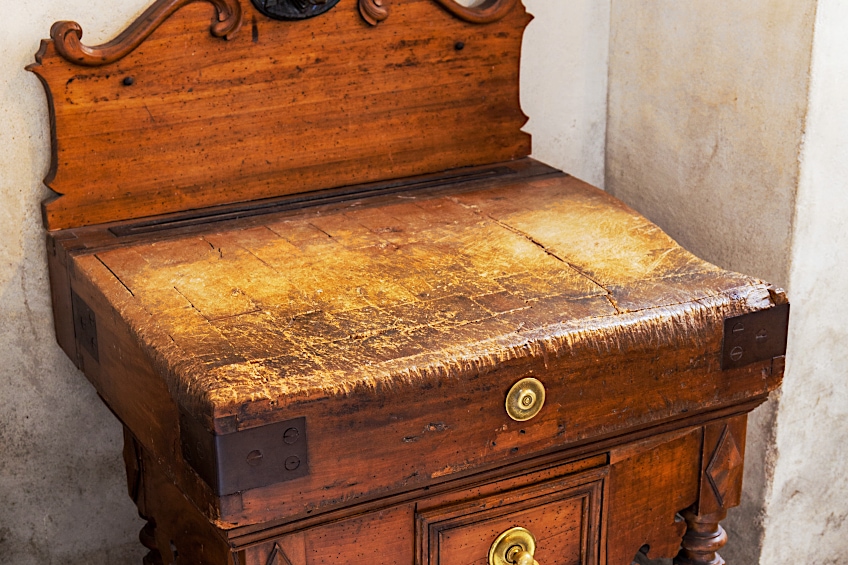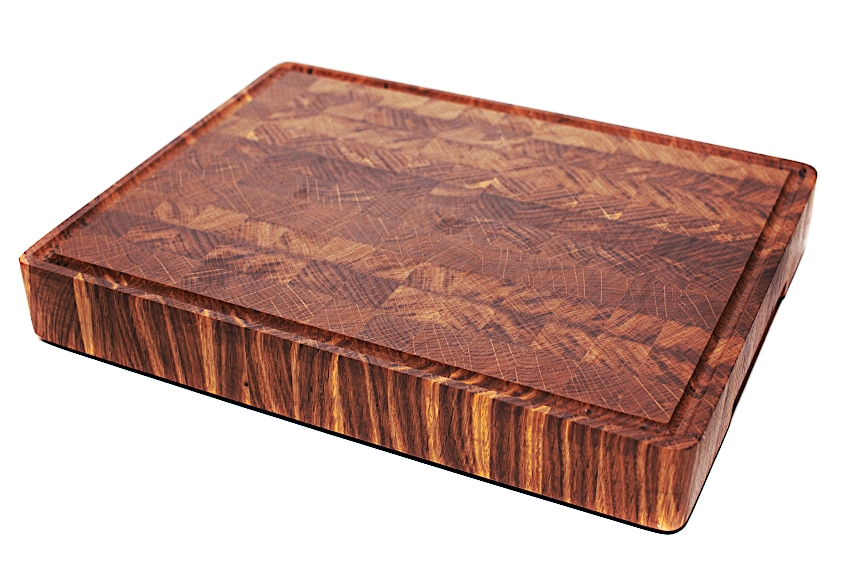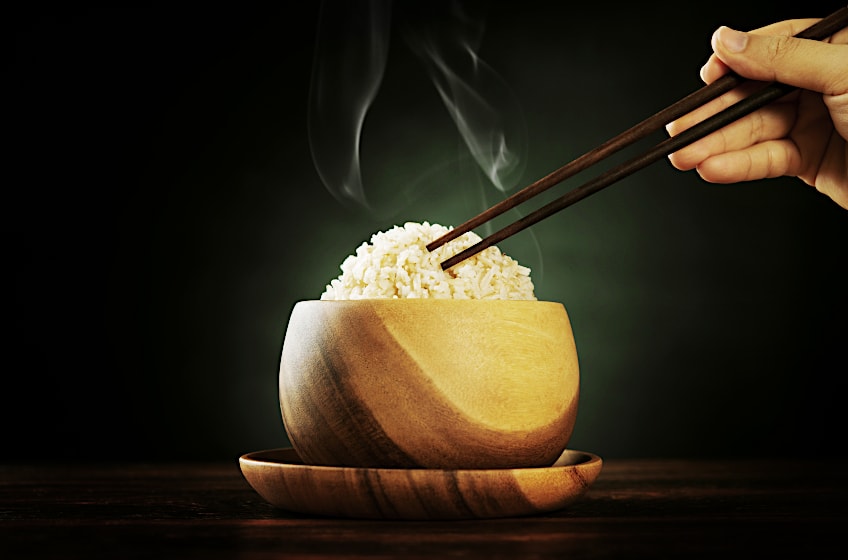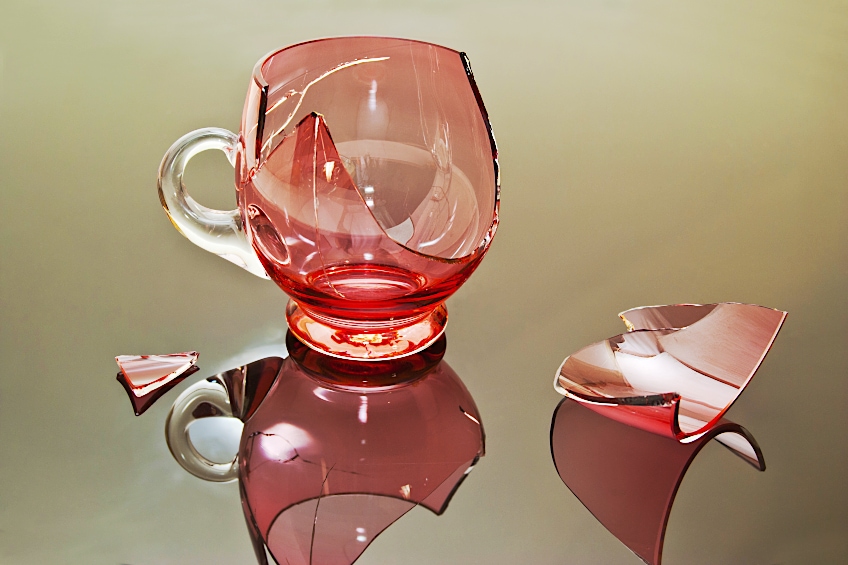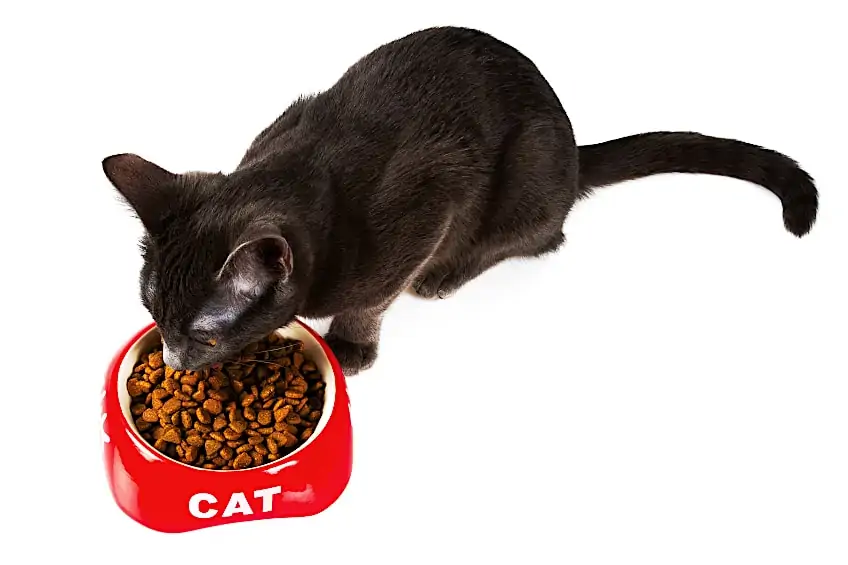Food-Safe Wood Glue – Best Non-Toxic Adhesives
This post may contain affiliate links. We may earn a small commission from purchases made through them, at no additional cost to you. You help to support resin-expert.com
As new technologies are developed, and as the world moves towards a zero-emission society, manufacturers are becoming more conscious of what their products are used for. These manufacturers increasingly lean toward producing products that aren’t only good for the environment but are food safe too. Glues in particular seem to be among the many products that are becoming environmentally friendly and food safe, but what is a food-safe glue? Let’s have a look at what food safety means in the context of adhesives and how you can ensure that the products you use are food-safe.
Table of Contents
What Does Food Safe Mean in the United States?
You may be under the impression that there is a universal definition of food safety that all manufacturers of food products and products that come into contact with food need to adhere to, but this is simply not the case. In most cases, most manufacturers and consumers can agree upon certain things that they both identify as being important aspects of food safety, but each company, industry, city, government, country, and union have their own definition of food safety and the subsequent laws that accompany these definitions.
In the United States, the Food and Drug Administration (FDA) controls the definition of food safety, and applies regulatory enforcement during the production and packing processes.
The FDA controls how foods are grown, stored, packaged, shipped, and handled during the production process, and these regulations were updated in 2011. These definitions were updated due to a number of people falling violently ill due to foodborne illnesses across the entire country, therefore they have taken It upon themselves to update every aspect of their global supply chain food management standards to ensure that this never happens again.
If all of this seems a bit confusing, let’s wrap it all up neatly for you. Food safety essentially refers (but is not limited to) the presentation, preparation, storage, transport, and handling of food in such a manner that is not liable to cause risk of foodborne illnesses regardless of whether they are chronic or acute.
All of the safety procedures set out by the FDA ensure that food is safe for all of us regardless of its place of origin, which is a good thing considering just how far some products travel to end up on the shelves of our grocery stores. All of the above mentioned is a very generalized look at things, and the revised regulations go into intense detail about each, and every point mentioned.
How do you determine if a product is FDA approved? Well, this is where things get trickier than you would expect. Unfortunately, there are no regulations requiring companies to display their FDA approval (or lack thereof) on their product packaging. The best way to go about checking is to either contact the company directly or simply check their website or in-package leaflet for their compliance certification.
Which Food Safe Glues are Suitable for Woodwork?
There are lots of forums out there where you can find virtually endless discussions around whether a particular glue is food safe. Even if it is food-safe, there always seems to be an argument regarding which degree the glue is food-safe.
Can it come into contact with food? Can it be used on objects or surfaces which will inevitably come into contact with food? Can it be used on children’s toys which might end up in their mouths? There are various facets to this discussion which can go on forever, so here are a few things you should know about virtually any type of common glue or polyurethane adhesive you intend to use around or directly with foodstuff.
Most glues are safe when fully cured. Even if a small quantity of cured glue is ingested, it will not cause a reaction, unless you happen to be allergic to certain chemicals like latex, in which case you are more likely to suffer an allergic reaction to the surface the glue adhered to, as opposed to the glue itself.
This being said, when common glues or most other adhesives are still wet, or have not been combined with a hardening agent, they are extremely toxic and will cause extreme discomfort if they are ingested. This is why any manufacturer that makes adhesives that are graded for use with surfaces that will likely come into contact with food will state outright that you should not allow the surface in question to come into contact with food, in any way shape, or form until the product has set and cured completely.
For mass food production companies, the FDA will conduct rigorous tests to ensure any adhesive that comes into direct contact with food produces little to no odor and will leave behind absolutely no toxic residue, although these adhesive products are rarely available in commercial markets. In accordance with FDA regulations, most adhesives used in these environments are typical:
- Non-toxic one-part adhesives
- Non-toxic two-part adhesives (adhesive and hardening agent)
- Non-toxic glue derived from animal hide, bones, or tissue fibers
- Other natural plant-based adhesives that are non-reactive
The aforementioned is all well and good if you’re looking to start a meatpacking plant, but it isn’t very useful if you simply want to make a wooden container for a party or want to ensure that the wooden bowl you made recently won’t accidentally put you in the ER for the night.
What if you just want to walk into your local crafting store and pick up a food-safe glue without having to run a background check on the company that makes it? Well, we thought the same thing. There are a couple of products we found that meet the FDA’s lofty standards and therefore will be safe for you to use on your crafting products too!
The Best Food Safe Wood Glue Products
Without further ado, here are some glues you should be able to pick up either in-store or delivered right to your doorstep. These products are all perfectly safe for food contact but are specifically designed for use on workpieces that will be in direct contact with food. Remember to allow these adhesives to dry completely before placing them in direct contact with food, and always follow the manufacturer’s recommended time period for set and cure times.
Best Overall: GORILLA Wood Glue Natural Wood Color
Do you like facts? We love them. One of our favorites is the fact that the average adult silverback gorilla has a grip strength of 20 human men. How is this information relevant to the product? Well, considering that the Gorilla team saw fit to name their glue after an animal that could easily tear a tree log in half, you can bet this stuff is pretty strong.
This being said, strength is far from everything when it comes to adhesives, and the Gorilla team knows this, that is why they have created a glue that is so reliable, versatile, fast-drying, and easy to use that it has fast become a household name over the past couple of years. What makes this glue so popular though?
Well, Gorilla is a food-safe wood glue that has an incredible tensile strength rivaling even those fancy two-part adhesives. Strength certainly isn’t its only trick though, this one-gallon variant of the patented Gorilla formula is graded for use on all wood types and even wood composites like plywood or veneer.
Still don’t believe this is one of the best food-safe wood glue products on the market today? Gorilla glue dries remarkably quickly and creates a watertight seal between the surfaces being joined together, and if your workpiece is placed outside you don’t have to worry about the glue turning all yellow and brittle, this formula is UV resistant in addition to being completely safe for food contact once it has been cured completely.
One thing you should keep in mind is that even though Gorilla glue dries in just over 30 minutes it takes a full 24 hours to cure completely, so it might be a little while before you can actually place some food on any workpiece joined together with this product.
- 20-30 minutes clamp time on hard, soft, and composite woods
- Water resistant for indoor and outdoor usage
- Meets FDA indirect food contact standards
- Easy to use
- Versatile
- Extremely strong
- Food safe once cured
- Fast drying time
- Large volume per unit
- FDA approved product
- Only sold in large volumes
- Extended curing time
- Only one color is available
- Expensive
Best Performance: TITEBOND Dark Wood Glue
If you’re looking for wood glue that you can trust to not only keep your workpiece together but will protect you from any nasty additives, then you should consider Titebond dark wood glue from the Titebond team.
This product offers a host of characteristics that are simply perfect for your next food-safe woodwork project, but don’t take our word for it, have a look at their product range and see for yourself.
This particular food-grade wood glue is specifically designed for use with darker wood, which is perfect if your project involves woods like oak or even a veneer in the same vein as this hardwood. This product is rated as non-toxic and food safe once it has been cured completely, and even though it takes a full 24 hours to cure completely, the sheer strength of the bond it produces is well worth the wait in our opinion.
What really sets this particular food-grade wood glue apart from the competition is that in addition to being non-toxic, it is also flame-resistant, which means that should your workpiece somehow be set on fire, the adhesive will not act as an accelerant, instead, slowing down the spread of the flame.
A rarely mentioned part of working with glue is the clean-up process, and if you have ever worked with glue before you know that no matter how careful you are there is bound to be some splatter sooner or later. Fortunately, this nontoxic wood glue is easy to clean up, simply get some water on an old cloth and dab the spot gently for a clean surface in virtually no time at all!
The party piece of Titebond’s nontoxic wood glue is that it’s the first one-part wood glue to pass the water-resistant test set out by oversight committees. Why is this impressive you ask?
Well, typically water-resistant glues come in the form of two-part adhesives, namely an epoxy and a hardener, which react with one another to form a watertight bond with the surface. The Titebond team is the first to incorporate this characteristic into a one-part glue, which means you get all the benefits of a two-part adhesive with none of the effort (and half the cost!)
- Tinted glue for dark woods that cures to full strength in 24 hours
- Highly moisture resistant, and freeze and thaw stable for outdoor use
- Paintable, solvent free, non-toxic, and non-flammable
- Easy to use
- Only a one-part formula
- Water-resistant
- Food safe
- Strong adhesive bond
- Easy to clean up
- Reasonably priced
- Sold in small quantities
- Long cure time
- Only sold in one color
- Squeeze bottle can be difficult to handle
Best Value: ELMER’S China and Glass Cement
There are few things in the world more panic-inducing than the sound of a glass breaking on your kitchen floor. the team over at Elmer’s glue understands that the last thing you want is to scrape the remains of your favorite China or glassware off the kitchen floor and throw it away, and that’s why they’ve introduced the seemingly miracle China and glass cement for just such occasions.
If you didn’t know that glue exists just for glass and ceramics, you would be completely forgiven, this product does tend to fly under the radar unless your area of expertise is antique repair. Think of this as a kind of food-safe superglue for glass and tableware that allows you to turn back the clock and get your prized possessions back virtually good as new!
The good news doesn’t end there though, Elmer’s adhesive is non-toxic which means that once it has been cured completely you are free to pop some food or drink into your newly repaired workpiece with the peace of mind of knowing that it won’t have any adverse effects.
If you still aren’t sold, consider that Elmer’s China and glass cement Is completely dishwasher safe, which means it’s not only convenient to have around, but it’s completely water-resistant! The best part is that you aren’t limited to repairing or crafting with glass and china, this adhesive is perfectly capable of working on ceramics too! If you’re worried about the heat getting to the glue, don’t.
Elmer’s is graded for outdoor use which means your glue won’t yellow at the first sign of sunlight, and it dries clear which means that any repairs made won’t even be visible, especially if you have little hairline cracks to fill in. As a food-safe superglue, Elmer’s really has gone above and beyond to ensure that whatever you choose to use it on, the workpiece will last for a lifetime.
- Quick-curing formula is non-toxic and dishwasher safe
- Dries clear for near-seamless bonds on glass, pottery, and porcelain
- Suitable for various indoor and outdoor applications
- Reasonably priced
- Easy to use
- Dries clear
- Quick cure time
- Food safe
- Versatile
- Dishwasher safe
- Sold in small quantities
- Cannot be used on metal
- Not specifically graded for wood use
What Could You Use Food Safe Adhesive For?
There are lots of workpieces that might require the use of a food-safe adhesive, but they can be tough to think of off the top of your head. Thankfully, we’ve put together a list of a couple of things you could make or fix using a food-safe adhesive product like the ones we mentioned previously.
Remember. Regardless of the type of glue you are working with, always wear gloves and work in a well-ventilated area.
Cutting Boards
Have you ever purchased a cutting board and it was either too big or too small for your kitchen countertop? Maybe you’d like a custom cutting board with some neat engravings or a unique shape that suits your needs. In either case, you’re likely to want to get food adhesive in case you need to join two boards together, or if you’d like to tack on a piece you have designed separately.
A food-safe adhesive ensures that you don’t have to worry about any food that comes into contact with your board being contaminated with solvents or other harmful additives.
Wooden Bowls or Plates
If you’re into creating your own tableware you will likely need something to keep your finely woven masterpieces together, and what’s better for keeping your precious creations together than a really strong adhesive that happens to be food-safe?
We can’t think of anything else, so the next time you get the itch to make some woven bowls to liven up your dinner table, consider using food-safe adhesive to make the crafting process go that much quicker, not to mention give you the peace of mind that you and your family are safe from harmful chemicals and contaminated foodstuff.
Repairing Glassware
When most people think of glassware their minds tend to drift towards images of their favorite glass or maybe their perfectly sized late mug sitting in their kitchen cupboards. What would you do if that favorite mug broke though?
Would you buy a new one? Would it be the same? Would you even be able to find the exact one that fits your hand the same way or holds just the right amount of coffee for you each morning? The chances are the answer to that question is no, and if so, you’re not alone.
This is another great example of where food-safe adhesives are a great thing to have around, and their uses are not limited to just glassware like mugs and drinking glasses. Food-safe adhesives are also great for use on things like flower vases and animal food bowls, this is because they are non-toxic and won’t affect your plants or your best friend in any way!
Make Your Own Cutting Board Using Food Safe Glue
If you don’t just want to repair an old cutting board, but make your very own stylish cutting board from scratch, we have provided a useful video tutorial below. Enjoy!
Now that you know what the term “food safe” means in the United States, which types of food-safe glues are conducive to woodwork, what the best food-safe glue products on the market are, and how you can make the most of your food safe adhesive products, its time for you to get out there and put your new-found knowledge to good use. Remember that most adhesives are toxic before they have been cured completely, and never let any food come into direct contact with your workpiece before the manufacturer’s recommended drying time has elapsed.
Frequently Asked Questions
Which is the Best Glue for Cutting Boards?
Whether you are trying to repair an older cutting board, trying to extend an existing cutting board, or simply trying to add something cool to a boring cutting board, you are going to need food-safe glue for the job. What is the best glue for cutting boards? Any clear, food-safe glue will do the trick, although considering that cutting boards are subjected to a lot of stress forces, picking a food-safe adhesive with a really high tensile strength is strongly recommended.
Can You Eat Food-Safe Glue?
Let’s be clear, no glue is absolutely 100% food safe. Even though you could ingest a piece of fully cured glue without having any reaction to it, the glue will not be metabolized or broken down by your body. Therefore, ingestion of any cured adhesive is never recommended, as it could cause an obstruction in your intestines which can cause extreme discomfort.
What Happens if You Swallow Glue?
If you were to swallow cured glue, nothing much would happen and, in all likelihood, you would probably pass it like anything else you ingest. Ingesting raw glue that has not been cured though, will likely cause poisoning or could cause a fatal blockage in your intestines which could lead to hospitalization and/or death.


